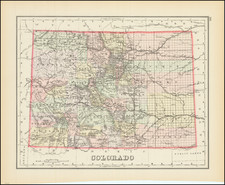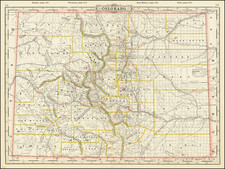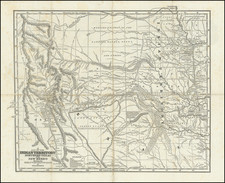Colorado Gold Rush Boom Town Turned Ghost Town
Nice example of this rare early view of Nevadaville, Colorado, from Alfred Edward Mathews Pencil Sketches of Colorado, published in 1866.
The view shows a booming mining town, with a number of active mills, businesses, boarding houses and hillsides filled with mining activity.
A.E. Mathews (1831-1874) came to the United States at an early age and was raised in Ohio. He worked as a typesetter, itinerant bookseller, and school teacher, with a predilection for landscape sketching. During the Civil War, Mathews served in the Union Army with Ohio troops for three years, making topographical maps and views. and produced images of scenes behind the front which were issued by Ehrgott & Forbriger.
In 1865, Mathews moved to Denver, where he produced a number of portfolios of views of the Rocky Mountains, Colorado and Montana, including his important 1866 Pencil Sketches of Colorado.
Colorado Territory was formed following the discovery of gold in the mountains above Denver in 1858, which was followed by the 1859 Colorado Gold Rush. By the time Mathews arrived in Denver, it was one of the most important mining regions in America and the hub of commerce for the Rocky Mountains and Western Plains.
Mathews' work captured this transient and foundational moment in the history of Colorado. The work is very rare, with only a few complete sets changing hands in the prior decade and single plates from the work are often among the earliest accurate depictions of the regions sketched by Mathews.
Nevadaville, Colorado
Nevadaville was founded shortly after the 1859 gold discovery by John Gregory in Gregory Gulch. Originally known as Nevada, the town underwent a name change to Nevadaville around 1870. This mining town, though smaller and less renowned than its neighbors Black Hawk and Central City, played a crucial role in the mining ecosystem of the region.
The post office at Nevadaville was called the Bald Mountain post office, to avoid confusion with other Nevadas and Nevadavilles. The community is now largely a ghost town, although not completely deserted. The Nevadaville Masonic Temple that started in 1861 still holds regular meetings.
Nevadaville's early history paralleled that of Black Hawk and Central City, with its formation closely tied to the gold rush initiated by Gregory's discovery. The town quickly became a hub for miners, distinguishing itself as a predominantly working-class settlement where many miners of the district resided. In contrast to Black Hawk's role as the smelting and industrial center and Central City's status as the economic and social hub, Nevadaville was essentially the heart of the mining workforce.
One of the most striking features of early Nevadaville was its concentration of stamp mills. By 1861, approximately 40 stamp mills were in operation near the town, a remarkable number for the era. This high concentration of mills not only underscores Nevadaville's importance in the processing of gold ore but also cements its status as the milling center of Colorado at the time. These mills were instrumental in crushing ore to extract gold, a vital process in the mining industry.
In 1861, a devastating fire destroyed over 50 buildings, (including naturalist and taxidermist Martha Maxwell's boardinghouse). However, residents made effective use of TNT to save the remaining parts of the city from the fire. Nevadaville rebuilt after fire destroyed a large piece of the town. A more serious threat to the town was the fact that the near-surface oxidized portions of the veins were worked out in the early 1860s. The rudimentary ore mills had trouble recovering gold from the deeper sulfide ores.
After growing to a population of nearly 1,100 by 1880, the population fell below 100 by 1920 and today is a ghost town.









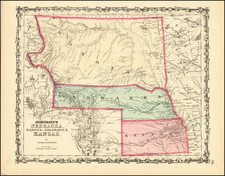
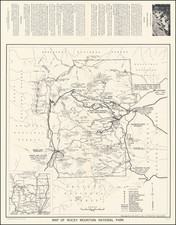
![[ Denver ] The City of Denver Published by H.L. Thayer . . .](https://storage.googleapis.com/raremaps/img/small/98923.jpg)
